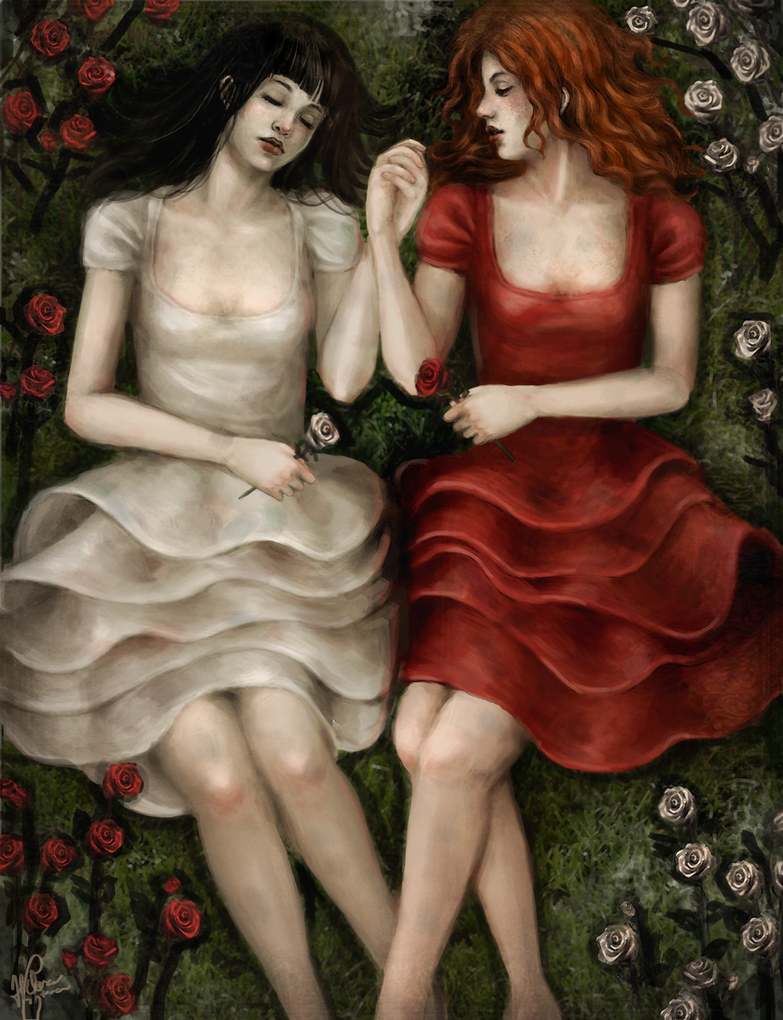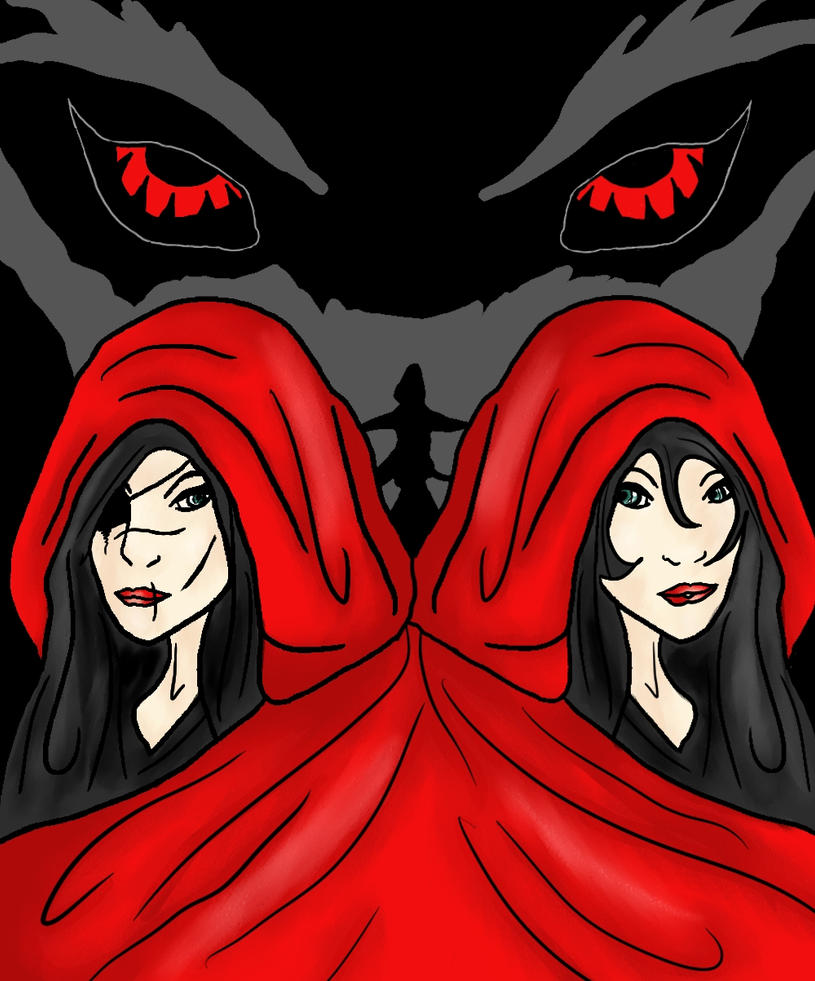 |
| A retelling of Little Red Riding Hood. |
After grandma is killed by a wolf (called a Fenris), Scarlett hunts Fenris with her sister Rosie and partner Silas. In the first conversation between Scarlett and her partner Silas, I thought of The Hunger Games when Katniss and Gale are in the woods. However, what if Katniss' sister, Prim, started feeling drawn to Gale like Rosie is to Silas?
One element of fairy tales I love is sisters. We know the evil jealous stepsisters very well. Like Cinderella's stepsisters who would do anything, even cut off their foot, in order to surpass the heroine or keep her down. Well, there are also entwined sisters like Snow White and Rose Red. These sisters of the old fairy tales don't get jealous. Snow White and Rose Red both end up with a happy ending and a man.
 |
| "Snow White and Rose Red" by AkaiSoul |
Jackson Pearce may be mixing Snow White and Rose Red with Little Red Riding Hood. The result is an action story of love and identity. Here are two of my favorite passages so far that describe the sisterly bond.
Rosie:
When we were little, Scarlett and I were utterly convinced that we'd originally been one person in our mother's belly. We believed that somehow, half of us wanted to be born and half wanted to stay. So our heart had to be broken in two so that Scarlett could be born first, and then I finally braved the outside world a few years later. It made sense, in our pig-tailed heads--it explained why, when we ran through grass or danced or spun in circle long enough, we would lose track of who was who and it started to feel as if there were some organic, elegant link between us, our single heart holding the same tempo and pumping the same blood.
 |
| A fan redrew the book cover. Scarlett is on the left. |
And I have to admit that there is something undeniably fulfilling about hunting with Rosie. Somehow, it makes me feel as if the long list of differences between us doesn't exist. We're dressed the same, we fight the same enemy, we win together ... It's as though for that moment I get to be her, the one who isn't covered in thick scars, and she gets to understand what it is to be me. It's different than hunting with Silas--he and I are partners, not part of the same heart.
So entwined that they have the same heart. However, they cannot share the same heart forever. Along with feelings toward one boy, the girls feel different towards life. Scarlett thinks only of hunting. It calms her, identifies her, and makes her feel right. And she feels that hunting together is what binds her closer to her sister and best friend. Rosie, on the other hand, wonders about having more in her life than hunting. The heart actually has two different beats.
The chapters alternate narration between the two sisters. They never backtrack to what the other felt during the previous chapter. These two aspects add to the suspense. I like the fast pace, the hunt for an advantage, and the relationships. I also like that Silas seems to have an important role other than the love interest.
I have to tell you that this fairy tale retelling is set in modern-day Georgia so if you're imagining a fairy tale woods, then terms like McDonalds will pop out at you. It's magical realism with the magical fantasy elements in our world.
Also I have to mention a factor I dislike. I don't like how much the stalked/murdered victims are described as being ignorant of the consequences of their appearance and merry laughter. Most of them are dressed for a club or girls' night out. It sounds as if they should have worn Harry Potter's hand-me-down baggy gray sweats, have used no beauty supplies including scented soap, and have not vocally expressed their joy.
You can argue that the Fenris attack only when these girls drift from crowds, but a stalked victim is still the victim. The stalker is the cause of the crime. At least the Fenris is shown to attack near a public day event so that victims cannot be faulted for going out at night. Also I appreciate that the Fenris are always described by their deceiving appearance and true nature.
The girls' fashion shouldn't matter as much to the Fenris because they are distinctively said to look at the girls with hunger not desire. They hunger for nourishment and the thrill of chasing and terrifying. Their prey shouldn't be limited to girls only.
The fashion comments come from Scarlett's perspective though. She only thinks in terms of hunting and her body is covered in scars. The book starts with a glimpse of her before she learned of the Fenris.
Once again, I am only halfway through the book and anticipate two big discoveries. I recommend it so far.
 |
| My hand-me-downs may help. |
You can argue that the Fenris attack only when these girls drift from crowds, but a stalked victim is still the victim. The stalker is the cause of the crime. At least the Fenris is shown to attack near a public day event so that victims cannot be faulted for going out at night. Also I appreciate that the Fenris are always described by their deceiving appearance and true nature.
The girls' fashion shouldn't matter as much to the Fenris because they are distinctively said to look at the girls with hunger not desire. They hunger for nourishment and the thrill of chasing and terrifying. Their prey shouldn't be limited to girls only.
The fashion comments come from Scarlett's perspective though. She only thinks in terms of hunting and her body is covered in scars. The book starts with a glimpse of her before she learned of the Fenris.
Once again, I am only halfway through the book and anticipate two big discoveries. I recommend it so far.





